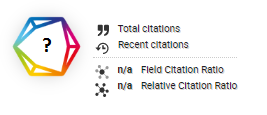IDENTIFIKASI ALASAN KESEDIAAN TES HIV DAN ANALISIS FAKTOR RISIKO PADA ORANG DENGAN HIV/AIDS DI PAPUA BARAT
DOI:
https://doi.org/10.46984/sebatik.v27i2.2285Keywords:
Kesediaan, Tes HIV, Faktor risiko, ODHA, Papua Barat.Abstract
Tes diagnosis Human Immunodeficieny Virus (HIV) merupakan salah satu upaya pencegahan infeksi HIV dalam program Fast Track 95-95-95 yang ditargetkan tercapai pada tahun 2030. Sakit HIV stadium awal yang bersifat asimtomatis menyebabkan individu tidak menyadari telah terinfeksi. Studi ini bertujuan untuk mengidentifikasi alasan melakukan tes diagnosis HIV dan faktor risikonya oleh Orang Dengan HIV/AIDS (ODHA) di Papua Barat. Desain studi yang digunakan adalah cross-sectional dengan responden sebanyak 254 ODHA dari Manokwari, Kota Sorong, dan Fakfak. Data sekunder dikumpulkan dari rekam medis ODHA dan wawancara menggunakan kuesioner. Data kemudian dianalisis univariat untuk menggambarkan proporsi setiap variabel dan dianalisis bivariat dengan uji Chi-Square (Fisher's exact) pada nilai signifikan p < 0,05 untuk mengetahui faktor risiko alasan melakukan tes diagnosis HIV. Gambaran umum mayoritas ODHA adalah berusia dewasa 26-45 tahun sebanyak 70,1%, perempuan 54,7%, pendidikan dasar-menengah 66,5%, PNS;swasta/wiraswasta 66,9%, riwayat TB 52,4%, dan sakit HIV stadium III dan IV 68,1%. Alasan terbanyak untuk melakukan tes diagnosis HIV oleh ODHA adalah karena sakit sebanyak 64,2%. Variabel jenis kelamin, pekerjaan, riwayat TB, dan stadium sakit HIV menjadi faktor risiko yang berhubungan signifikan dengan alasan melakukan tes diagnosis HIV. Studi ini mengindikasikan adanya keterlambatan dalam diagnosis awal infeksi HIV pada ODHA di Papua Barat. Kedepannya perlu dilakukan studi komprehensif mengenai faktor yang memengaruhi ODHA untuk melakukan tes diagnosis HIV lebih awal sebagai informasi bagi pihak terkait dalam mengatasi permasalahan deteksi dini infeksi HIV.
References
Abdalla, A. M., & Abusalih, H. H. (2021). Factors affecting HIV Voluntary Counseling and Testing uptake among undergraduate students of Khartoum , Sudan. The Open AIDS Journal, 15, 21–27. https://doi.org/10.2174/1874613602115010021
Alcocer-bruno, C., Ferrer-cascales, R., Ruiz-Robledillo, N., Sánchez-SanSegundo, M., & Zaragoza-Martí, A. (2020). Personal and lifestyle determinants of HIV transmission risk in Spanish University students. International Journal of Environmental Research and Public Health, 17(22), Article number 8332. https://doi.org/doi:10.3390/ijerph17228332
Aurelina, R. (2020). Faktor-faktor yang berhubungan terhadap kadar Cluster of Differentiation 4 (CD4) pada pasien HIV/AIDS. Jurnal Medika Hutama, 02(01), 308–313. http://jurnalmedikahutama.com
Bossonario, P. A., Ferreira, M. R. L., Andrade, R. L. de P., Sousa, K. D. L. de, Bonfim, R. O., Saita, N. M., & Monroe, A. A. (2022). Risk factors for HIV infection among adolescents and the youth: A systematic review. Revista Latino-Americana de Enfermagem, 30, Article number e3696. https://doi.org/10.1590/1518-8345.6264.3696
Djan, D. (2018). Factors affecting the attitude of young people towards HIV testing uptake in rural Ghana. Journal of HIV & Retro Virus, 4(13), 10–15. https://doi.org/10.21767/2471-9676.100045
Erena, A. N., Shen, G., & Lei, P. (2019). Factors affecting HIV counselling and testing among Ethiopian women aged 15-49. BMC Infectious Diseases, 19(1), Article number 1076. https://doi.org/10.1186/s12879-019-4701-0
Fauziani, F., Nadapdap, T., & Safitri, M. E. (2021). Influence factors pregnant women In HIV testing in Idi Rayeuk Health Centre East Aceh. Journal of Healthcare Technology and Medicine, 7(1), 352–363. https://jurnal.uui.ac.id/index.php/JHTM/article/viewFile/1461/758
Getaneh, T., Negesse, A., Dessie, G., & Desta, M. (2022). The impact of tuberculosis co-infection on virological failure among adults living with HIV in Ethiopia: A systematic review and meta-analysis. Journal of Clinical Tuberculosis and Other Mycobacterial Diseases, 27(March), Article number 100310. https://doi.org/10.1016/j.jctube.2022.100310
Govender, R. D., Hashim, M. J., Khan, M. A. B., Mustafa, H., & Khan, G. (2021). Global epidemiology of HIV/AIDS: A resurgence in North America and Europe. Journal of Epidemiology and Global Health, 11(3), 296–301. https://doi.org/10.2991/jegh.k.210621.001
Ha, J. H., Lith, L. M. Van, Mallalieu, E. C., Chidassicua, J., Pinho, M. D., Devos, P., & Wirtz, A. L. (2019). Gendered relationship between HIV stigma and HIV testing among men and women in Mozambique : a cross- sectional study to inform a stigma reduction and male-targeted HIV testing intervention. BMJ Open, 9, Article number e029748. https://doi.org/10.1136/bmjopen-2019-029748
Klatt, E. C. (2022). Pathology of HIV/AIDS, 33rd Edition. Mercer University, USA. https://webpath.med.utah.edu/AIDS2022.PDF
Kraef, C., Bentzon, A., Panteleev, A., Skrahina, A., Bolokadze, N., Tetradov, S., Podlasin, R., Karpov, I., Borodulina, E., Denisova, E., & Azina, I. (2021). Delayed diagnosis of tuberculosis in persons living with HIV in Eastern Europe: associated factors and effect on mortality — a multicentre prospective cohort study. BMC Infectious Diseases, 21, Article number 1038. https://doi.org/10.1186/s12879-021-06745-w
Limmade, Y., Fransisca, L., Rodriguez-fernandez, R., Bangs, M. J., & Rothe, C. (2019). HIV treatment outcomes following antiretroviral therapy initiation and monitoring: A workplace program in Papua , Indonesia. PLoS ONE, 14(2), Article number e0212432. https://doi.org/10.1371/journal.pone.0212432
Mcmaughan, D. J., Oloruntoba, O., & Smith, M. L. (2020). Socioeconomic status and access to healthcare: Interrelated drivers for healthy aging. Frontiers in Public Health, 8(231), 1–9. https://doi.org/10.3389/fpubh.2020.00231
Melkamu, M. W., Gebeyehu, M. T., Afenigus, A. D., Hibstie, Y. T., Temesgen, B., Petrucka, P., & Alebel, A. (2020). Incidence of common opportunistic infections among HIV-infected children on ART at Debre Markos referral hospital , Northwest Ethiopia : a retrospective cohort study. BMC Infectious Diseases, 20(50), 1–12. https://doi.org/10.1186/s12879-020-4772-y%0A(2020)
Mokhele, I., Sineke, T., Langa, J., & Onoya, D. (2021). Self-reported motivators for HIV testing in the treat-all era among HIV positive patients in Johannesburg, South Africa. Medicine, 100(15), Article number e25286. https://doi.org/DOI: 10.1097/MD.0000000000025286
Musumari, P. M., Techasrivichien, T., Srithanaviboonchai, K., Tangmunkongvorakul, A., Ono-Kihara, M., & Kihara, M. (2020). Factors associated with HIV testing and intention to test for HIV among the general population of Nonthaburi Province , Thailand. PLoS ONE, 15(8), Article number e0237393. https://doi.org/10.1371/journal.pone.0237393
Okal, J., Lango, D., Matheka, J., Obare, F., Ngunu-gituathi, C., Mugambi, M., & Sarna, A. (2020). “ It is always better for a man to know his HIV status ” – A qualitative study exploring the context , barriers and facilitators of HIV testing among men in Nairobi , Kenya. PLoS ONE, 15(4), Article number e0231645. https://doi.org/10.1371/journal.pone.0231645
Owusu, M. W., Krankowska, D. C., Lourida, P., & Weis, N. (2023). Late HIV diagnosis among migrant women living in Europe — a systematic review of barriers to HIV testing. IJID Regions, 7, 206–215. https://doi.org/10.1016/j.ijregi.2023.03.006
Parekh, B. S., Ou, C., Fonjungo, P. N., Kalou, M. B., Rottinghaus, E., Puren, A., Alexander, H., Cox Hurlston, M., & Nkengasong, J. N. (2019). Diagnosis of human immunodeficiency virus infection. Clinical Microbiology Reviews, 32(1), Article number e00064-18. https://doi.org/https://doi.org/10.1128/CMR.00064-18.
Purwani, N. L. P. S. H., Yuliana., & Wardana, I. N. G. (2020). Faktor yang berhubungan dengan perilaku tes HIV pada ibu hamil di Puskesmas Abiansemal I. Intisari Sains Medis, 11(3), 1210–1215. https://doi.org/10.15562/ism.v11i3.696
Putri, S. A., Aryawati, W., & Sari, N. (2021). Faktor-faktor yang berhubungan dengan tes HIV pada ibu hamil di wilayah kerja puskesmas Panjang Kota Bandar Lampung tahun 2020. Indonesian Journal of Health and Medical, 1(4), 570–583. https://ijohm.rcipublisher.org/index.php/ijohm/article/view/93
Rao, S., Av, S., Unnikrishnan, B., Madi, D., & Shetty, A. K. (2018). Correlates of late presentation to HIV care in a South Indian Cohort. American Journal of Tropical Medicine and Hygiene, 99(5), 1331–1335. https://doi.org/10.4269/ajtmh.18-0386
Rivera, M. V. G., Aponte, A., & Ko, W. W. (2021). Coinfection of tuberculosis in an undiagnosed HIV, AIDS patient presenting with shortness of breath , constitutional symptoms and lymphadenopathy. Cureus, 13(6), 1–5. https://doi.org/10.7759/cureus.15925
Susilowati, T., Sofro, M. A., & Sari, A. B. (2019). Faktor risiko yang mempengaruhi kejadian HIV/AIDS di Magelang. Seminar Nasional Rekam Medis & Informasi Kesehatan, 85–95. https://publikasi.aptirmik.or.id/index.php/snarsjogja/article/view/94/94
Tan, Y.-R., Kaur, N., Ye, A. J., Zhang, Y., Lim, J. X. Z., Tan, R. K. J., Ho, L. P., Chen, M. I.-C., Wong, M. L., Wong, C. S., & Yap, P. (2021). Perceptions of an HIV self- testing intervention and its potential role in addressing the barriers to HIV testing among at- risk heterosexual men : A qualitative analysis. Sexually Transmitted Infections, 97, 514–520. https://doi.org/10.1136/sextrans-2020-054773
Tran, B. X., Phan, H. T., Latkin, C. A., Nguyen, H. L. T., Hoang, C. L., Ho, C. S. H., & Ho, R. C. M. (2019). Understanding global HIV stigma and discrimination: Are contextual factors Sufficiently studied? (Gap Research). International Journal of Environmental Research and Public Health, 16(11), Article number 1899. https://doi.org/doi:10.3390/ijerph16111899
Umar, F., & Erni, E. (2019). Factors related to admission of HIV tests By pregnant mom. Jurnal Kesehatan Masyarakat, 9(1). https://jurnal.unismuhpalu.ac.id/index.php/PJKM/article/view/597
Wang, X., & Cheng, Z. (2020). Cross-sectional studies: Strengths, weaknesses, and recommendations. CHEST, 158(1), S65–S71. https://doi.org/10.1016/j.chest.2020.03.012
Weldesenbet, A. B., Tusa, B. S., Debele, G. R., Sisay, M. M., & Ayele, T. A. (2022). Time to first line antiretroviral therapy adverse drug reaction and its predictors among adult HIV/AIDS patients on treatment in Eastern Ethiopia. Frontiers in Pharmacology, 13, Article number 922744. https://doi.org/10.3389/fphar.2022.922744
Woldegeorgis, B. Z., Zekarias, Z., Adem, B. G., Obsa, M. S., & Kerbo, A. A. (2023). Prevalence and determinants of opportunistic infections among HIV-infected adults receiving antiretroviral therapy in Ethiopia : A systematic review and meta-analysis. Frontiers in Medicine, 10, Article number 1087086. https://doi.org/10.3389/fmed.2023.1087086
Zhang, K., Chan, P. S., Li, X., Fang, Y., Cai, Y., Zou, H., Cao, B., Cao, H., Hu, T., Chen, Y., & Wang, Z. (2023). Low behavioral intention to use any type of HIV testing and HIV self-testing among migrant male factory workers who are at high risk of HIV infection in China: A secondary data analysis. International Journal of Environmental Research and Public Health Article, 20(6), Article number 5029. https://doi.org/10.3390/ijerph20065029
Downloads
Published
How to Cite
Issue
Section
License
Copyright (c) 2023 Setyo Adiningsih, Mirna Widiyanti, Muhammad Fajri Rokhmad, Tri Nury Kridaningsih

This work is licensed under a Creative Commons Attribution 4.0 International License.
Authors retain all their rights to the published works, such as (but not limited to) the following rights; Copyright and other proprietary rights relating to the article, such as patent rights, The right to use the substance of the article in own future works, including lectures and books, The right to reproduce the article for own purposes, The right to self-archive the article








